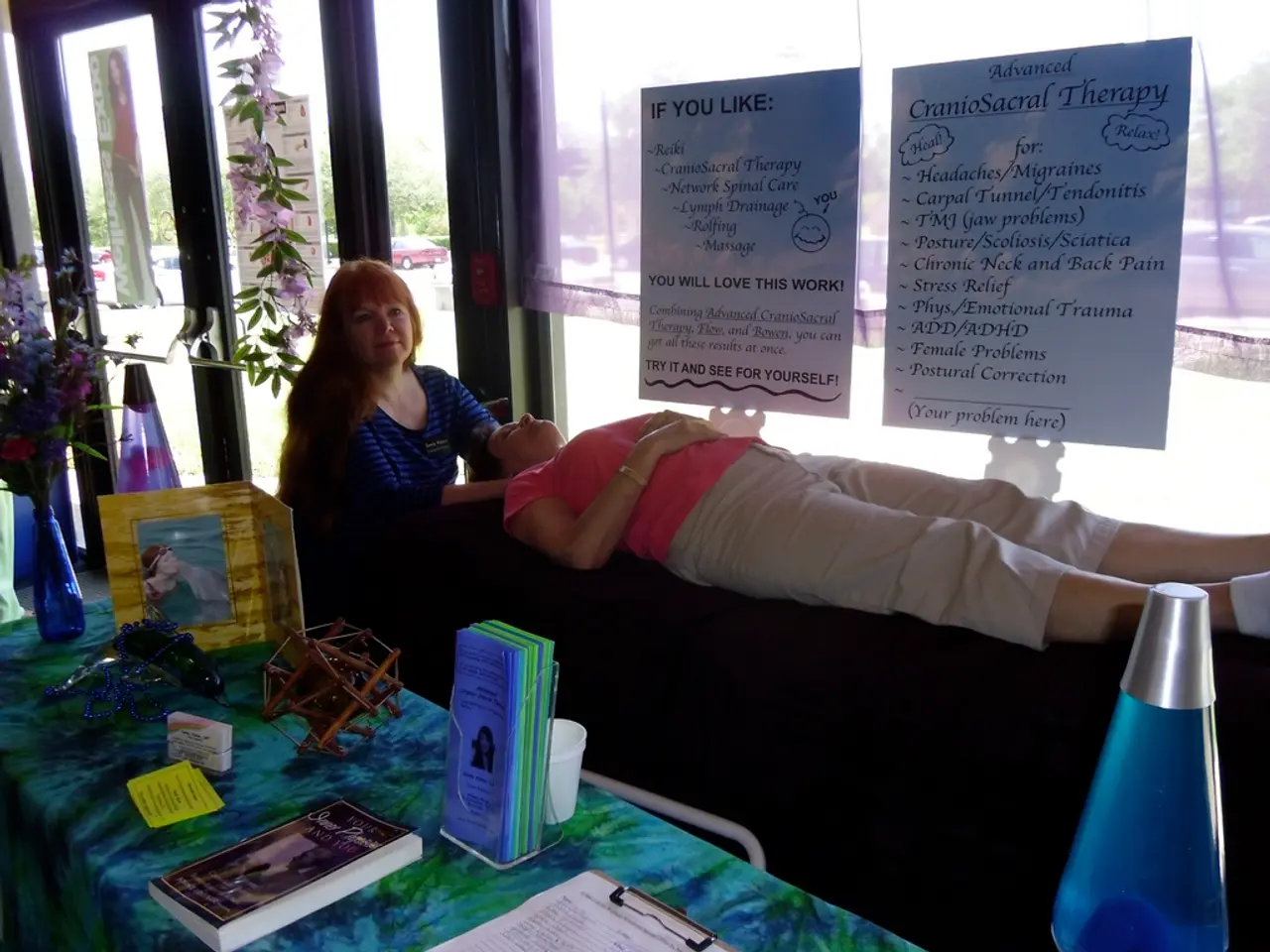Infant Vision Issues: Symptoms, Origins, and Additional Information
In the first few months of an infant's life, detecting vision problems can be a challenge due to their inability to verbally communicate symptoms. However, early detection is crucial for preventing long-term issues and supporting normal visual development.
Specialised screening tests, adapted for preverbal children, play a significant role in early detection. These tests assess visual acuity through methods like fixation and tracking responses, binocular fixation preference testing, forced-choice preferential looking tests, and visual evoked potentials.
Parents should be aware of key signs indicating possible vision problems. These signs include lack of eye contact, poor visual tracking, frequent squinting, strabismus (one eye turning inward or outward), abnormal eye alignment, excessive tearing or eye redness, and an absence of blink reflex when an object approaches the eye. Additionally, if an infant does not respond to visual stimuli as expected or displays unusual head tilting or eye rubbing, it may indicate a vision problem.
High-risk infants, such as those with a family history of eye problems, neurodevelopmental disorders, systemic conditions affecting the eyes, or prematurity (less than 32 weeks), should be referred promptly for a professional comprehensive eye exam without waiting for routine screening.
Regular screening by pediatricians or eye care specialists using age-appropriate methods is essential. For instance, binocular vision tests like the Lang or Fly Stereotest can assess how well the two eyes work together in toddlers.
Parents can utilise the InfantSEE programme, a public health initiative from the American Optometric Association, for a comprehensive eye assessment of their infant between 6 and 12 months. At home, parents can support their baby's vision development through age-appropriate activities such as rolling a ball around, playing with blocks and balls of various sizes, and reading or telling stories.
At 0-4 months, activities to support eye development include changing the child's position in their crib, placing toys within their focus, and supporting the development of eye-hand coordination. As the baby grows older, activities like placing toys and objects that the baby can grasp and kick, giving them adequate floor time to play and explore, and giving toys that the baby can hold are beneficial.
At 5-8 months, activities can include naming objects and actions, encouraging active exploration and movements, and playing hide and seek games. By 9-12 months, activities like naming objects and actions, encouraging active exploration and movements, and playing hide and seek games can further support visual development.
Early detection of eye issues in infants can prevent them from becoming more severe and have a better chance of successful treatment. Parents and caregivers of babies with vision problems can expect to have regular visits with their ophthalmologist for a detailed care plan and may need to work with other specialists.
Several specialists can work with children with severe vision loss, including orthoptists, orientation and mobility specialists, occupational therapists, counselors, special education teachers, and others. The American Public Health Organization estimates that around 1 in 5 preschoolers in the United States have vision problems.
Congenital causes of vision problems in babies can include developmental or genetic disorders, alcohol consumption during pregnancy, infection during pregnancy, and exposure to certain drugs during pregnancy. Babies' eyes and visual systems continue to develop during the first few months of life, and the stages vary across infants.
Acquired causes of vision problems in infants can include retinopathy of prematurity (ROP), ophthalmia neonatorum, amblyopia (lazy eye), strabismus, shaken baby syndrome, and retinal hemorrhages. Early detection and intervention can resolve most eye conditions in babies.
Treatments for vision problems in infants can include using eye drops, wearing eyeglasses, Botox injections, and surgery. Signs of problems with the eyes in infants can include red, crusty eyes, excessive tearing, extreme light sensitivity, eye turning to one side constantly, a white spot in the pupil or white pupil, and strabismus (crossed eyes or a squint).
In summary, a combined approach of using infant-specific visual tests, observing behaviours, referring high-risk infants directly for comprehensive eye exams, watching for risk factors, considering binocular vision tests as the child grows older, and regular screenings can enable early detection and timely treatment of vision problems in infants.
- A caregiver can keep an eye out for signs of strabismus, one eye turning inward or outward, as this could indicate a potential vision problem in the infant.
- Science plays a significant role in the early detection of vision problems in infants through specialized screening tests, such as visual evoked potentials and binocular fixation preference testing.
- Pfizer, or other health-and-wellness companies, may develop treatments for vision problems in infants, such as eye drops, eyeglasses, or surgery, to improve the infant's vision and mental health.
- Early detection and intervention of vision problems in infants, such as amblyopia, strabismus, or retinopathy of prematurity, can greatly enhance their mental health and visual development.




